
Incubating Redfoot Tortoise Eggs
Andy C. Highfield
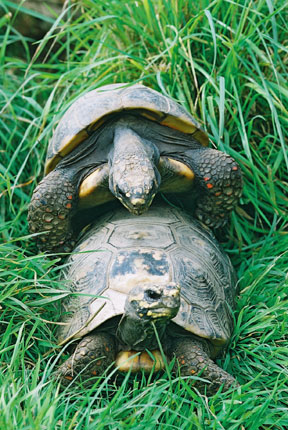
Redfoot tortoises (Geochelone carbonaria) mating
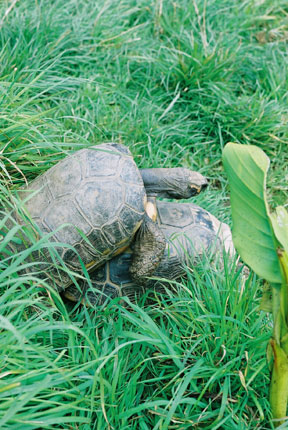
Compared to the eggs of Mediterranean Testudo species, the eggs of the Redfoot tortoise Geochelone carbonaria are enormous. On average, they measure approximately 43 X 48 mm and weigh between 40 to 50 grams. Female Redfoot tortoises seem to prefer nesting in very wet, almost muddy substrates. In fact, ours tend to nest in the evening, preferably during quite heavy rain. It is not known if this behavior is typical of that of the species n the wild. Individual females may lay multiple clutches of eggs each year, nesting every 3-4 months is fairly typical. Clutch density ranges from as few as three to as many as fifteen eggs per clutch, with a definite correlation between the number of eggs laid and the size of the female.
Moist vermiculite hydrated 1:1 with water (by weight) works well as an incubation substrate for this species. Some keepers add peat or sphagnum moss, but this appears to make little overall difference to viability. Plain vermiculite hydrated with water appears to be perfectly satisfactory. The overall ambient humidity within the incubator should be maintained at between 70-80%. Very high levels of humidity, above 90%, may be counterproductive. Success has been reported at a wide range of temperatures, from 27 degrees Celsius to 33 degrees Celsius, but most breeders find that temperatures between 29-31 degrees produce the most consistent success. Incubation with this species can be a fairly extended affair - timeframes from 120 days to 190 days are typical, with 145 days average.
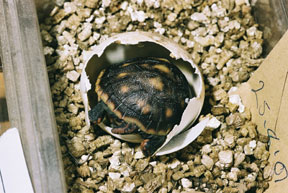
The hatchling may not emerge immediately after ‘pipping’ the egg. Once its immediate requirement for oxygen is met, it may remain in the egg for several days while the remaining yolk sac is absorbed. During this period, maintain environmental conditions exactly as for incubation.
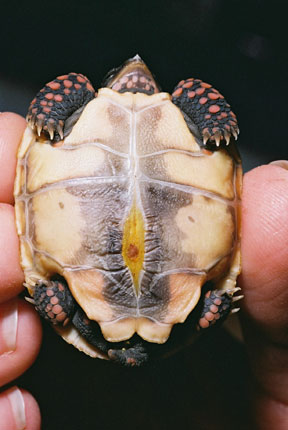
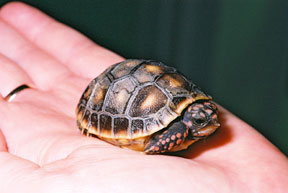
Once it has broken free of the egg, remove the hatchling to a neonate unit. Initially, moist paper towels form a suitable substrate (until the site of the yolk sac has fully healed) but after a week or so we usually transfer the baby to a more natural substrate comprised of peat, sphagnum moss and leaf litter. Maintain humidity within this unit at about 75%, and provide a shallow tray of fresh, clean water for soaking. Juvenile Redfoot tortoises are highly susceptible to dehydration, and if they are kept too dry, you can expect problems fairly quickly. The first sign is usually swollen and closed eyes. If this is observed, increase the humidity without delay. A semi-enclosed unit is suggested as a hatchling terrarium for this species, due to the need to maintain high levels of local humidity, and this should be equipped with appropriate lighting and heating systems as outlined in previous articles.
The diet is exactly as for adults of the species.
A full discussion of keeping and breeding Redfoot tortoises may be found in Mike Pingleton’s excellent book published by Carapace Press. This title is highly recommended to present and future keepers of this extremely amiable and interesting tortoise. We have kept them for almost 15 years, and we find them to be by far the most tolerant of all the high humidity tortoises, and far more suitable for less experienced keepers than any of the highly problematic hingeback (Kinixys) species, for example.